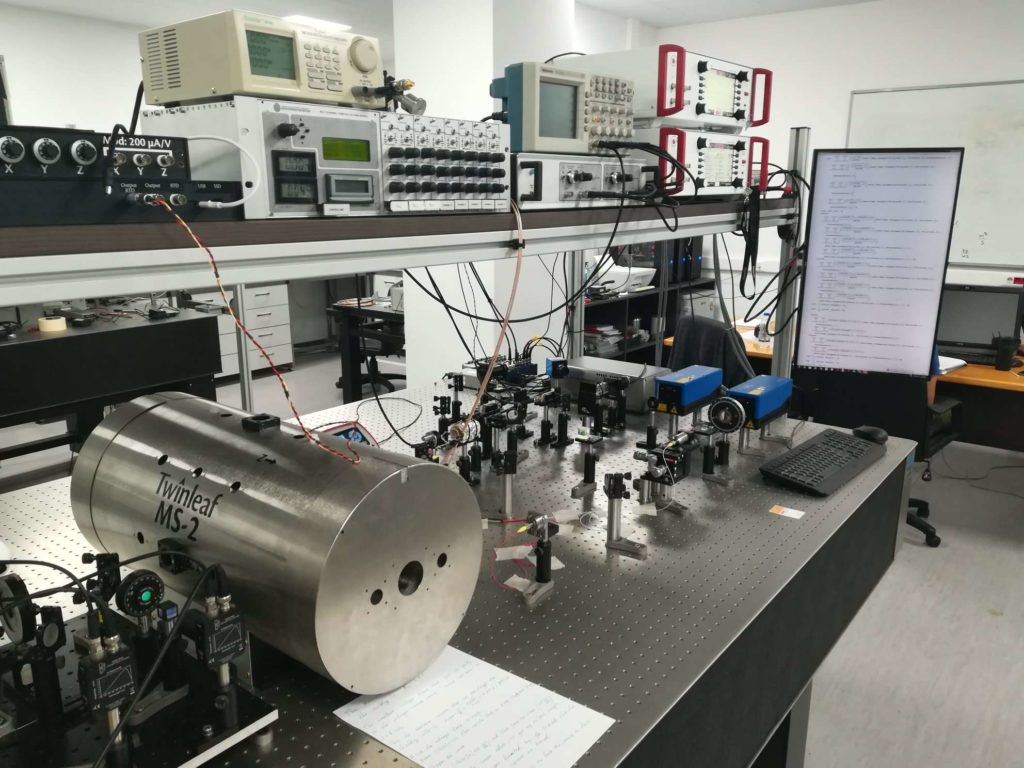Quantum Sensing with Hot Atomic Vapors
Introduction
Manipulating the spin degrees of freedom of atomic vapors has in recent years led to exciting advances in atomic physics and quantum metrology.
In particular, understanding spin relaxation phenomena in collision-dominated atomic vapors, like cesium vapors used in atomic clocks, has lead to novel ultrasensitive magnetometers, having a number of applications, from low-field NMR to biomagnetic imaging. One of the fundamental limitations of this kind of precision measurements is spontaneous spin noise. This is a quantum fluctuation of the atomic vapor’s collective spin driven by atomic collisions, and sets the noise level and hence the precision of all relevant spin measurements.

Our contributions
In previous years we have focused on high resolution measurements of spin noise at low magnetic fields, showing how one can obtain information about spin relaxation from the spontaneous spin noise resonance width.
Most recently, we have demonstrated a new phenomenon related to spin-exchange collisions, namely that in a multi-species atomic vapor and low magnetic fields, spin-exchange collisions induce positive inter-species spin-noise correlations. This is an extension in the realm of quantum fluctuations of the well known property of spin exchange, the inter-species transfer of a deterministic spin polarization. The new effect, termed spin-noise exchange, was revealed by a low-field increase of the total spin-noise power.
Our current focus
Most recently, we used quantum measurement theory to introduce a quantum trajectory analysis of spin-exchange collisions. Quantum trajectories illuminate the fundamental physics of spin-exchange collisions at the single-atom level. Using quantum trajectories, we can seamlessly produce spin noise from first principles, and study the correlations that spontaneously build up in dual-species vapors. It turns out that indeed such correlations are positive, as measured and theoretically understood using the more simple Bloch equations approach of our 2014 paper. We are currently undertaking yet another correlation measurement in a dual species vapor (cesium and rubidium) with a new experimental setup.

